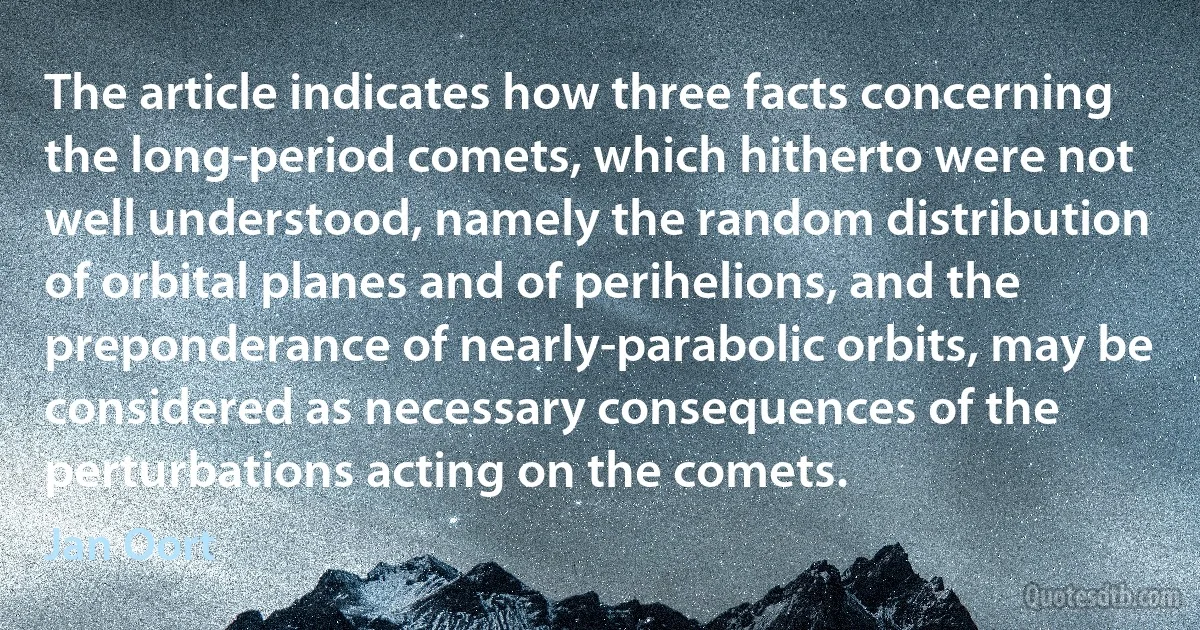
The article indicates how three facts concerning the long-period comets, which hitherto were not well understood, namely the random distribution of orbital planes and of perihelions, and the preponderance of nearly-parabolic orbits, may be considered as necessary consequences of the perturbations acting on the comets.
Jan OortRelated topics
article distribution necessary orbital preponderance three well factsRelated quotes
I complain to one of my fellow servers that I don't understand how she can go so long without food. "Well, I don't understand how you can go so long without a cigarette," she responds in a tone of reproach. Because work is what you do for others; smoking is what you do for yourself.

Barbara Ehrenreich
Each worldview was a cultural product, but evolution is true and separate creation is not. [...] Worldviews are social constructions, and they channel the search for facts. But facts are found and knowledge progresses, however fitfully. Fact and theory are intertwined, and all great scientists understand the interaction.

Stephen Jay Gould
So you play your albums and you smoke your pot And you meet your girlfriend in the parking lot Oh, but still you're aching for the things you haven't got, What went wrong? And if you can't understand why your world is so dead And why you've got to keep in style and feed your head Well, you're twenty one and still you mother makes your bed And that's too long.

Billy Joel
Gentlemen, if ever a generation will come after us which is so weak and soft-hearted that it doesn't understand our task, then indeed the whole of National Socialism has been in vain. To the contrary, in my opinion one should bury bronze plates on which it is recorded that we have had the courage to carry out this great and so necessary work.

Odilo Globocnik
In the case of complex personalities the matter stands thus: one of these can understand other men better than they can understand themselves, because within himself he has not only the character he is grasping, but also its opposite. Duality is necessary for observation and comprehension.

Otto Weininger
